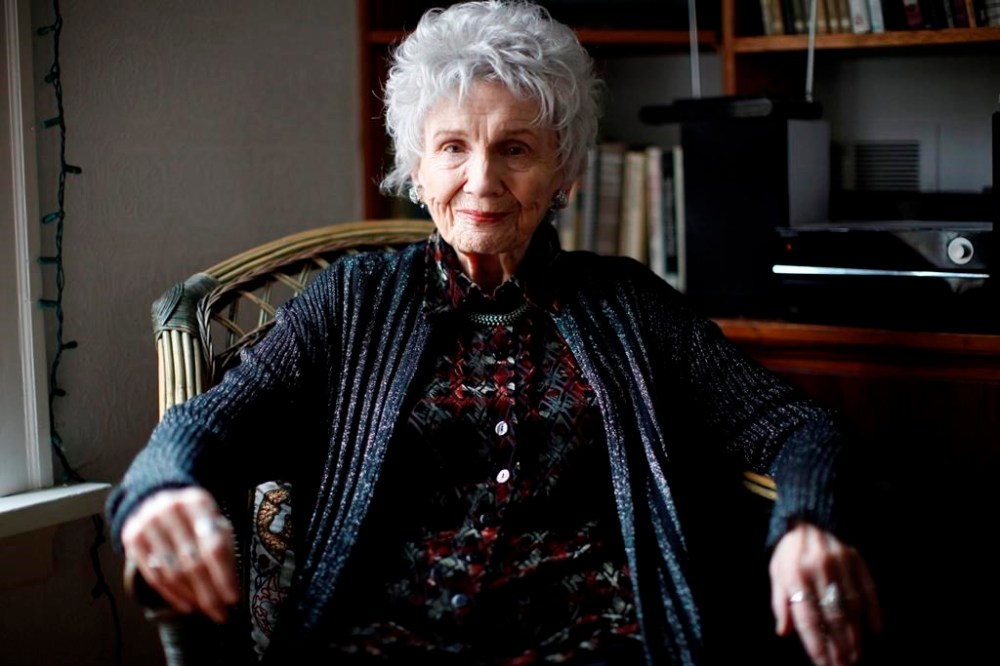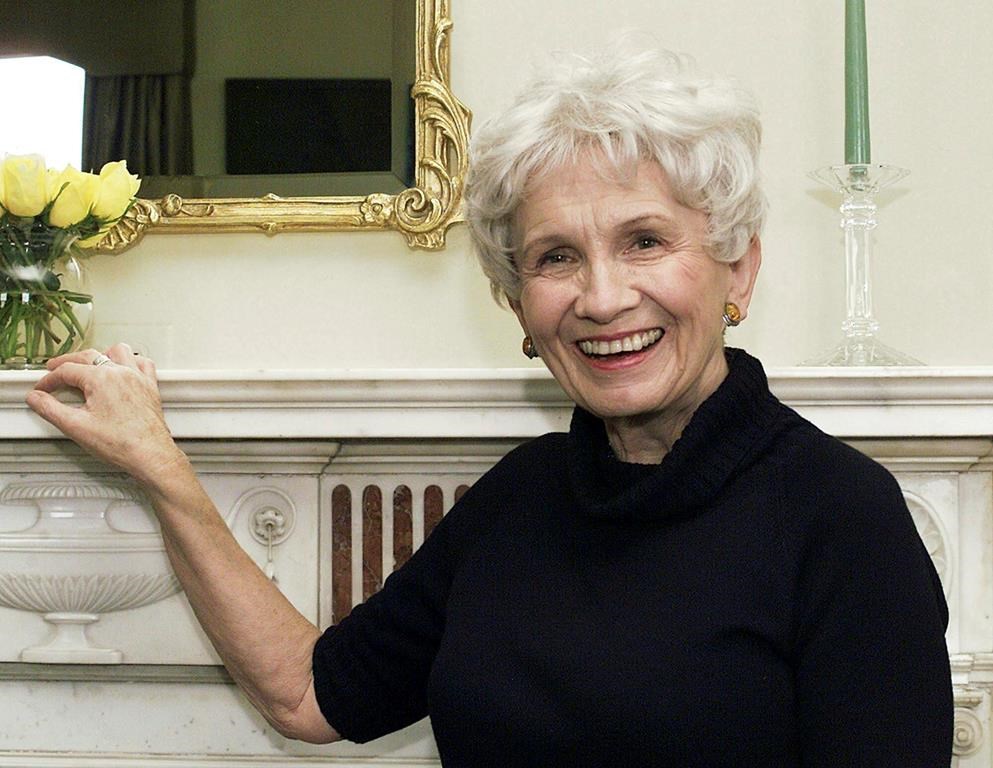Alice Munro, Nobel literature winner revered as short story master, dead at 92
Advertisement
Read this article for free:
or
Already have an account? Log in here »
We need your support!
Local journalism needs your support!
As we navigate through unprecedented times, our journalists are working harder than ever to bring you the latest local updates to keep you safe and informed.
Now, more than ever, we need your support.
Starting at $15.99 plus taxes every four weeks you can access your Brandon Sun online and full access to all content as it appears on our website.
Subscribe Nowor call circulation directly at (204) 727-0527.
Your pledge helps to ensure we provide the news that matters most to your community!
To continue reading, please subscribe:
Add Brandon Sun access to your Winnipeg Free Press subscription for only
$1 for the first 4 weeks*
*$1 will be added to your next bill. After your 4 weeks access is complete your rate will increase by $4.99 a X percent off the regular rate.
Read unlimited articles for free today:
or
Already have an account? Log in here »
Hey there, time traveller!
This article was published 14/05/2024 (506 days ago), so information in it may no longer be current.
Nobel laureate Alice Munro, the Canadian literary giant among the world’s most esteemed contemporary authors and short story writers, has died at age 92.
A spokesperson for publisher Penguin Random House Canada said Munro, winner of the Nobel literary prize in 2013, died Monday at home in Port Hope, Ontario. Munro had been in frail health for years and retired after her 2012 collection, “Dear Life.”
Often ranked with Anton Chekhov and John Cheever, Munro achieved stature rare for an art form traditionally placed beneath the novel. She was the first lifelong Canadian to win the Nobel and the first recipient cited exclusively for short fiction. The Swedish academy lauded her ability to “accommodate the entire epic complexity of the novel in just a few short pages.”

Little known beyond Canada until her late 30s, Munro became one of the few short story writers to enjoy ongoing commercial success. Over a half century of writing, she perfected illuminating the universal through the particular, creating stories set around Canada that appealed to readers globally. She produced no single definitive work, but dozens of showcases of her wisdom, technique and talent.
She was admired without apparent envy, revered by the likes of Jonathan Franzen, John Updike and Cynthia Ozick. Fellow Canadian author Margaret Atwood called her a pioneer for women and Canadians.
“Back in the 1950s and 60s, when Munro began, there was a feeling that not only female writers but Canadians were thought to be both trespassing and transgressing,” Atwood wrote in 2013 for the Guardian.
Although not overtly political, Munro participated in the cultural revolution of the 1960s and ’70s and permitted her characters to do the same. She was a farmer’s daughter who married young, then left her husband and took to “wearing miniskirts and prancing around,” as she recalled to The Associated Press in 2003. Many of her stories contrasted her parents’ generation with her own, departing from the years when housewives daydreamed “between the walls that the husband was paying for.”
Her stories often first appeared in The New Yorker. Her prose style was straightforward, her tone matter of fact, but her plots revealed unending disruption and disappointments: broken marriages, violent deaths, madness and dreams unfulfilled, or never even attempted.
Moviegoers would become familiar with “The Bear Came Over the Mountain,” adapted by Sarah Polley into 2006’s “Away from Her.” Munro received honors from around the English-language world, including Britain’s Man Booker International Prize and the National Book Critics Circle award in the U.S., where the American Academy of Arts and Letters voted her in as an honorary member.

She was a short story writer by choice, and, apparently, by design. Judith Jones, an Alfred A. Knopf editor, did not want to publish Munro’s only novel, writing in an internal memo that “there’s no question the lady can write but it’s also clear she is primarily a short story writer.”
Munro would acknowledge that she didn’t think like a novelist.
“I have all these disconnected realities in my own life, and I see them in other people’s lives,” she told the AP. “That was one of the problems, why I couldn’t write novels. I never saw things hanging together too well.”
Alice Ann Laidlaw was born in 1931 in Wingham, Ontario, and spent much of her childhood there. Her father was a fox farmer, her mother a teacher and the family’s fortunes shifted between middle class and working poor. “Canadian Gothic” was one way she described the community of her childhood.
A top student, she received a scholarship to study at the University of Western Ontario, majoring in journalism as a “cover-up” for her pursuit of literature. She was still an undergraduate when she sold a story about a lonely teacher to CBC Radio. One fellow student wrote to the author that the story reminded him of Chekhov. The student, Gerald Fremlin, would become her second husband. Another fellow student, James Munro, was her first husband. They married when she was only 20, and had four children.
Settling with her family in British Columbia, Alice Munro wrote between trips to school, housework and helping her husband at their bookstore. She wrote in her laundry room, her typewriter placed near the washer and dryer. Isolated from the literary center of Toronto, she managed to get published in several literary magazines and attracted the attention of Ryerson Press. Her debut collection, “Dance of the Happy Shades,” was released in 1968 with a first printing of just under 2,700 copies. A year later, it won the Governor’s General Award and made Munro a national celebrity — and curiosity. “Literary Fame Catches City Mother Unprepared,” read one newspaper headline.

“When the book first came they sent me a half dozen copies. I put them in the closet. I didn’t look at them. I didn’t tell my husband they had come, because I couldn’t bear it. I was afraid it was terrible,” Munro told the AP. “And one night, he was away, and I forced myself to sit down and read it all the way through, and I didn’t think it was too bad. And I felt I could acknowledge it and it would be OK.”
By the early ’70s, she had left her husband, later observing she was not “prepared to be a submissive wife.”
Her changing life was best illustrated by her response to the annual census. For years, she had written down her occupation as “housewife.” In 1971, she switched to “writer.”
